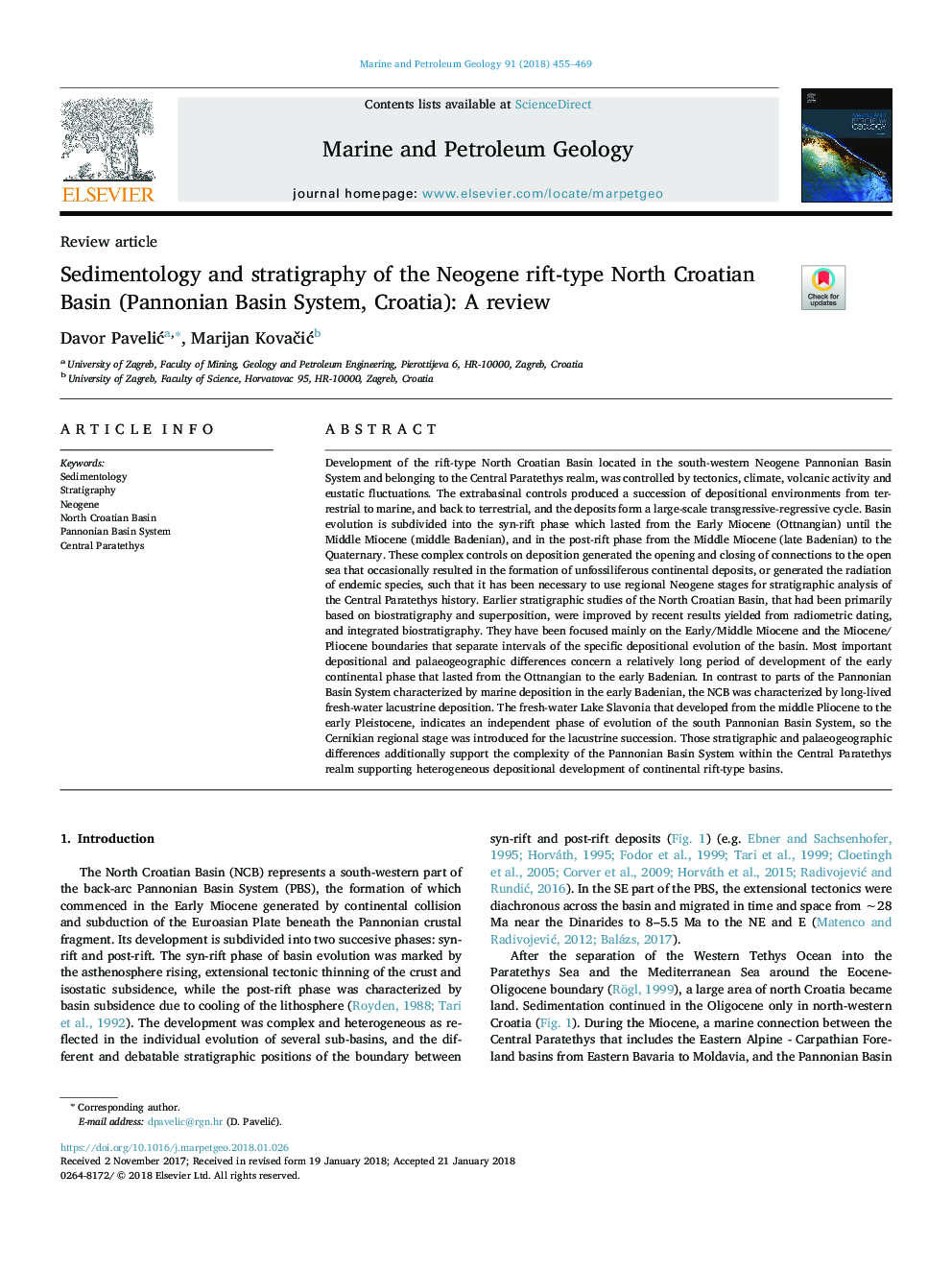| کد مقاله | کد نشریه | سال انتشار | مقاله انگلیسی | نسخه تمام متن |
|---|---|---|---|---|
| 8909142 | 1637134 | 2018 | 15 صفحه PDF | دانلود رایگان |
عنوان انگلیسی مقاله ISI
Sedimentology and stratigraphy of the Neogene rift-type North Croatian Basin (Pannonian Basin System, Croatia): A review
ترجمه فارسی عنوان
رسوب شناسی و چینه شناسی حوضه شمالی کرواتی شمال غربی نئوژن (سیستم حوضه پانونی، کرواسی): بررسی
دانلود مقاله + سفارش ترجمه
دانلود مقاله ISI انگلیسی
رایگان برای ایرانیان
کلمات کلیدی
موضوعات مرتبط
مهندسی و علوم پایه
علوم زمین و سیارات
زمین شناسی اقتصادی
چکیده انگلیسی
Development of the rift-type North Croatian Basin located in the south-western Neogene Pannonian Basin System and belonging to the Central Paratethys realm, was controlled by tectonics, climate, volcanic activity and eustatic fluctuations. The extrabasinal controls produced a succession of depositional environments from terrestrial to marine, and back to terrestrial, and the deposits form a large-scale transgressive-regressive cycle. Basin evolution is subdivided into the syn-rift phase which lasted from the Early Miocene (Ottnangian) until the Middle Miocene (middle Badenian), and in the post-rift phase from the Middle Miocene (late Badenian) to the Quaternary. These complex controls on deposition generated the opening and closing of connections to the open sea that occasionally resulted in the formation of unfossiliferous continental deposits, or generated the radiation of endemic species, such that it has been necessary to use regional Neogene stages for stratigraphic analysis of the Central Paratethys history. Earlier stratigraphic studies of the North Croatian Basin, that had been primarily based on biostratigraphy and superposition, were improved by recent results yielded from radiometric dating, and integrated biostratigraphy. They have been focused mainly on the Early/Middle Miocene and the Miocene/Pliocene boundaries that separate intervals of the specific depositional evolution of the basin. Most important depositional and palaeogeographic differences concern a relatively long period of development of the early continental phase that lasted from the Ottnangian to the early Badenian. In contrast to parts of the Pannonian Basin System characterized by marine deposition in the early Badenian, the NCB was characterized by long-lived fresh-water lacustrine deposition. The fresh-water Lake Slavonia that developed from the middle Pliocene to the early Pleistocene, indicates an independent phase of evolution of the south Pannonian Basin System, so the Cernikian regional stage was introduced for the lacustrine succession. Those stratigraphic and palaeogeographic differences additionally support the complexity of the Pannonian Basin System within the Central Paratethys realm supporting heterogeneous depositional development of continental rift-type basins.
ناشر
Database: Elsevier - ScienceDirect (ساینس دایرکت)
Journal: Marine and Petroleum Geology - Volume 91, March 2018, Pages 455-469
Journal: Marine and Petroleum Geology - Volume 91, March 2018, Pages 455-469
نویسندگان
Davor PaveliÄ, Marijan KovaÄiÄ,
